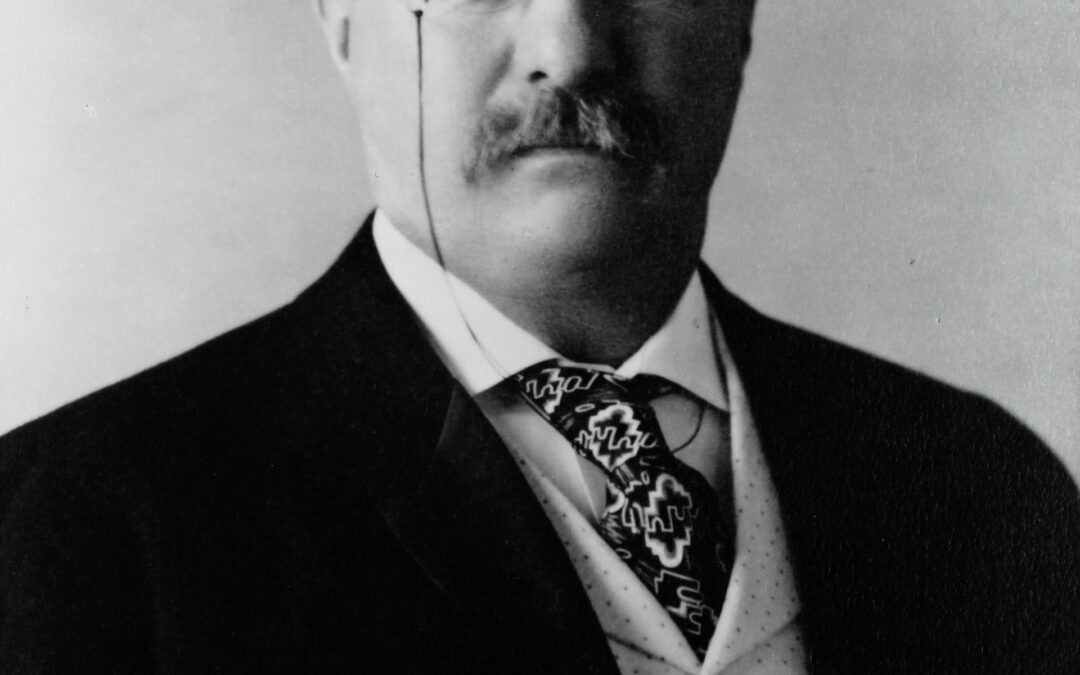Oak Creek Whitetail Ranch is honored to hold the records for 33 of the top 35 whitetail deer! So, we know a few things about the origins of hunting. Our March blog relates the story of Theodore Roosevelt and Still Hunting.
Theodore Roosevelt
Teddy Roosevelt was a passionate hunter and a lover of the outdoors. While his first hunting trips were in the backwoods of Maine, the heart of Roosevelt’s hunting experiences took place in the American West, which he shared in his 1885 book, Hunting Trips of a Ranchman. From hunting elks, wolves, and bucks, Roosevelt provides magnificent insight into a variety of northwestern America’s most well-known inhabitants.
Roosevelt was more than just a president who was a hunter. He not only got it but he is also credited in history for inventing it and popularizing it. Roosevelt formed a coalition of hunting sports enthusiasts in 1887 to, among other things bring an end to the commercial slaughter of wildlife, introduce a fair-chase sporting code, and a new concept called conservation, with hunting as its foundation. The citizen group he founded was the Boone and Crockett Club still exists today. For more information about the Boone and Crockett Club, today visit https://www.boone-crockett.org/join-boone-and-crockett-club-today-0.
Within a little more than a year of becoming President in 1901 Roosevelt had established his first two national parks, Crater Lake in Oregon and Wind Cave in South Dakota. Roosevelt went on to set aside 230 million acres of federal land for conservation, creating federal bird reservations, national game preserves, and national parks, among other sites.
Fair Chase and Still Hunting
Theodore Roosevelt didn’t have mil-dots, rangefinders, or computerized scopes. Fair chase became a part of his overall conservation ethic. It defined a true sportsman as one who could kill game yet use self-restraint to ensure that wildlife populations would never be threatened again.
The name Still Hunting, which Roosevelt employed on numerous occasions, does not mean hunting from a tree stand or stationary position. Still Hunters prowl like animals and stalk their prey through the thick undergrowth in woods, overgrown fields, river bottoms, and marshes. They walk very slowly, use the wind to their advantage and blend into the environment. They place each footstep carefully to avoid snapping twigs or crunching leaves, alternating between taking one to two steps and 30-second observational pauses. Rainy, snowy, and windy days are much more accommodating for still hunting.
Your planned path should take you through regions of good habitat that you identified during your research and scouting. It is best to still hunt along known feed-to-bed routes in the morning, and along the bed-to-feed routes in the evening. Midday should be focused more on thicker cover closer to bedding areas. Ridgelines will often provide good still-hunting conditions. The wind keeps the ground relatively free of leaves, and you’re looking at the country on both sides of you from an elevated angle.
Orange clothing is highly recommended in still hunting. Not only to stealth fully locate your prey, but also to avoid being mistaken for one by another hunter. Hunter fluorescent orange clothing is highly visible, and is available in hats, coats, vests, and pants. Many animals, such as deer, are not able to see it since their sensitivity to various wavelengths of light differs from humans.
The more you know about the history of hunting and conservation efforts, the better hunter you will become. For more information on Fair Chase, Still Hunting, and whitetail deer visit our website at https://oakcreekwhitetailranch.com/.


Recent Comments